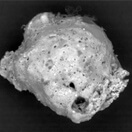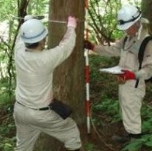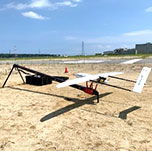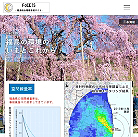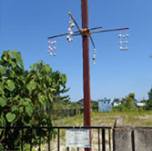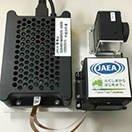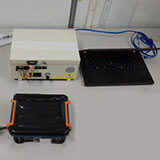
Research and Development
CLADS Basic Fundamental Research
Among the basic foundational research, applied research, and practical research toward the decommissioning work, CLADS is conducting basic foundational research that contributes toward the resolution of nuclear energy issues.

Decommissioning Sicence Diagram
“Decommissioning Sicence Diagram” provides a bird's eye view of the entire decommissioning from contaminated water management to processing, disposal and environmental remediation, and shows the correlation between the needs in each decommissioning process, thereby organizing the issues to be solved in basic and fundamental research.
“Decommissioning Sicence Diagram (Detailed Version)” provides detailed information on the selected needs one by one.
In order to proceed with the decommissioning project in a rational manner, it is necessary to identify important research issues that are considered necessary not only for the present but also for the future, along with the timing and method of implementation. For this purpose, by investigating of matching of project needs and research seeds, important untouched or buried (unnoticed) research issues for the entire project should be uncovered and presented as essential research issues. In addition to updating “List of Basic and Fundamental Research Issues on Decommissioning”, which have been worked on, the relationship between needs and seeds would be organized and “Decommissioning Sicence Diagram” to meet the above requirements would be created.
*Click on the map to see the details.
Fuel debris
Tomioka / Ibaraki
- Analysis and estimation by analysis
- The internal situation of the reactor is estimated from the analysis results of the fuel debris taken out on a trial basis and the information obtained in various reproduction experiments.
- Improving the accuracy of analysis methods
- We are developing an analysis method to obtain information on the extracted fuel debris from multiple perspectives.
- Contribution to establishment of disposal method
- We propose technical possibilities for evaluation and disposal to ensure the safety required when removing and storing fuel debris.
other
- Uncertainty reduction of FP and debris behavior and in-core contamination and debris properties based on accident progression scenarios for Fukushima Daiichi Units 2 and 3
- Advanced understanding of in-vessel conditions through evaluation of fuel disintegration and migration behavior
- Advanced understanding of in-vessel conditions through evaluation of fuel disintegration and migration behavior
- Estimation of debris properties and reactor damage using internal investigation, accident analysis, and sample analysis results
- Analytical evaluation of Fukushima Daiichi accident progress and debris behavior
- Development of technology for sorting fuel debris and radioactive waste
- Radiation characterization of in-plant and retrieved fuel debris
- Development of metrological control methods based on non-destructive measurement
- Elucidation of chemisorption behavior of cesium and steel
- Demonstration study on the application of isotope mass spectrometer for solid samples to fuel debris analysis and solid waste analysis - Analysis of contaminated samples and debris samples in the building
- Elucidation of the mechanism of ageing by microorganisms and development of technology to deter the diffusion of radionuclides
- Development of a method for predicting the ageing of fuel debris
- International cooperation to collect knowledge on fuel debris analysis
- Characterization of metallic fuel debris focusing on its formation mechanism
- Study on evaluation and measurement of alpha aerosols from the viewpoint of internal exposure estimation
- Optimization study of fuel debris dissolution conditions
- Development of technologies necessary for analysis of fuel debris properties, etc.
- Evaluation of Fuel Debris Particle Behavior during 1F Fuel Extraction Using U-containing Simulated Debris
- Improvement of analytical accuracy of fuel debris
Waste management
Ibaraki
- Reasonable property grasp / evaluation
- Required for proper management o radioactive waste
- Construction of measures for high-concentration waste
- We are studying the methods necessary to safely treat and dispose of highly radioactive waste.
- Materialization of low-concentration waste treatment
- We are considering a concrete method to make a large amount of low-radioactivity waste into a form that can be finally disposed of easily.
other
- Exploration of mechanisms for long-term stability of solidified products, etc.
- Source term study for safety assessment of accidental waste disposal
- Exploration of factors governing geopolymer/zeolite
- Study on the safety of secondary wastes from water treatment
- Study on water sealing, repair and stabilization of PCV lower section with geopolymer, etc.
- Migration behavior of radionuclides into iron-based structural materials
- Research and development of solid waste treatment and disposal
- Non-destructive measurement of alpha contamination by radiation ionization aerosol measurement
- Development of advanced analytical techniques
- Experimental studies using contaminant water (contamination mechanism, Sr adsorbent)
- Study of rational treatment and disposal of contaminated concrete waste considering alteration by dissolution
- Strontium adsorbent manufacturing
- Study on the contamination mechanism inside and outside the reactor building of Fukushima Daiichi Nuclear Power Station
- Develop a knowledge base for research and development of waste management technologies
Environmental restoration
Miharu / Minamisoma
- Contribution to lifting evacuation orders
- By advancing monitoring data analysis technology and exposure evaluation methods, we are providing society with the information necessary to lift evacuation orders.
- Impact assessment / prediction presentation
- We understand the behavior of radioactive substances in the environment and publish the results of future impact assessments and forecasts in an easy-to-understand manner.
other
- Development of debris characterization method integrating chemical measurement technology and informatics, and tie-up type human resource development
- Data maintenance for the project to consolidate distribution data of radioactive materials, EMDB operation, and creation of integrated maps
- Mechanism of radionuclide trapping by bioindicator species, radioactive dust evaluation
- Steady implementation of Fukushima Prefectural People's Health Survey support operations using WBC testing
- Future dose projections considering land and water dynamics
- Development of solid-phase analysis methods using electron microscopes, etc.
- Prediction of radioactive Cs behavior in forest areas and radioactive Cs concentrations in trees
- Development of analytical techniques for trace amounts of radioactive materials in environmental samples
- Model development for nuclide migration
- Behavior of radiocesium in the hydrosphere/change over time
- Gamma-ray measurement
- Deposition of radioactive cesium in the terrestrial environment / change over time
- Combined monitoring and exposure assessment in difficult-to-return areas
- Behavior of radiocesium in urban environment/change over time
- Development of monitoring tools
Radiation common scientific research
Tomioka / Ibaraki
- Reduction of exposure
- By promoting research to visualize invisible radiation, we will prevent inadvertent exposure during work and contribute to the safety of workers.
- Advancement of analytical technology
- We are proposing new analysis methods for radioactive materials and nuclear fuel materials, and are developing technologies that can evaluate objects even i n environments that were previously difficult to measure.
- Long-term soundness / safety research
- In order to evaluate the soundness and safety of structures over the long term, we are studying the relationship between material deterioration and corrosion in high radiation environments.
other
- Development of molecular biological and electrochemical diagnostic and suppression techniques for unseen corrosion caused by microorganisms leading to integrity decay
- Research and development of a hybrid type of reactor building long-term integrity evaluation method utilizing building response monitoring and damage imaging technology

